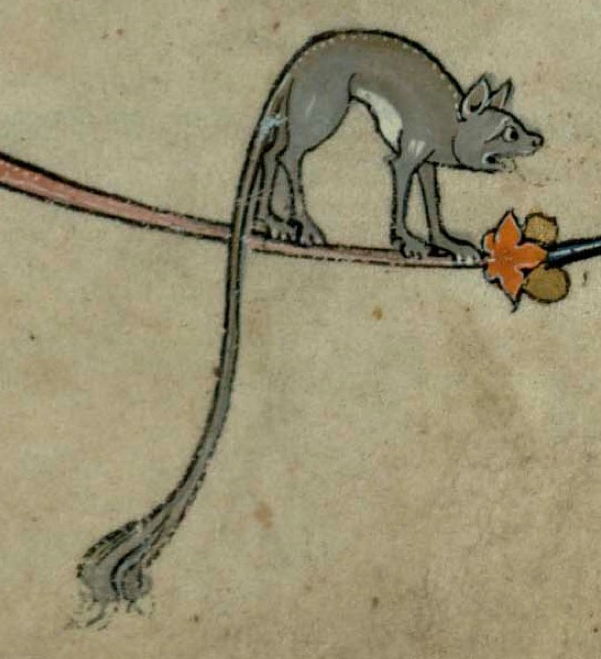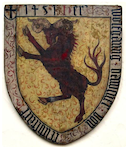27 March 2016
The Roots of the Tail
In a previous blog, I did some image processing on VMS folio 79v and discovered some odd-looking tails under the green paint.
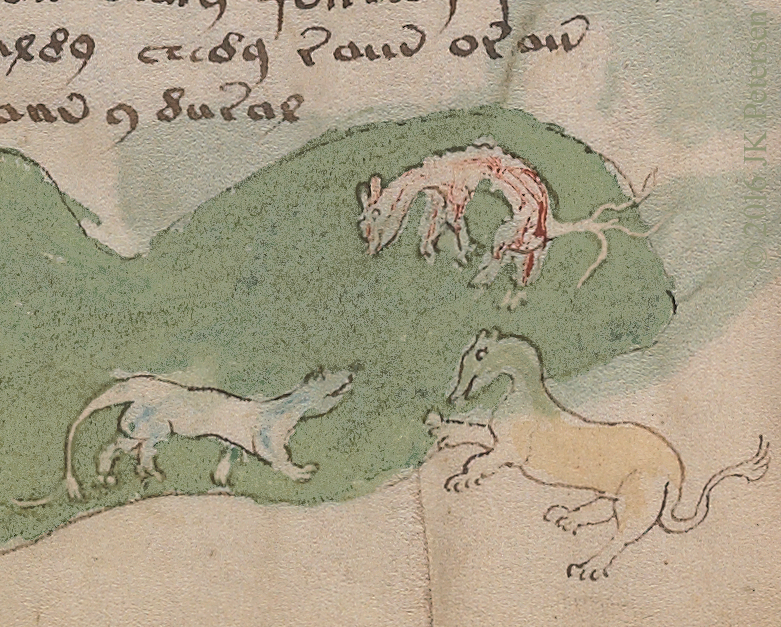 It’s not unusual to find a feathered tail on images of animals that look like lions, but the critter top-right has a very strange branch-like (or root-like) appendage where one would expect a tail and the lower-left one is unusual too.
It’s not unusual to find a feathered tail on images of animals that look like lions, but the critter top-right has a very strange branch-like (or root-like) appendage where one would expect a tail and the lower-left one is unusual too.
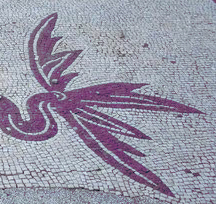 So I looked around and discovered that the Imperial Roman era had quite a tradition of embellishing tails—especially those of sea critters (including fish-legged gods). Even dolphins, which are not fish and do not have fish tails, were created with flower-like tails.
So I looked around and discovered that the Imperial Roman era had quite a tradition of embellishing tails—especially those of sea critters (including fish-legged gods). Even dolphins, which are not fish and do not have fish tails, were created with flower-like tails.
Here are some examples from Greek and Roman mosaics and frescoes. I have intensified the colors on some of the monocromatic mosaics so you can see the imagery more easily.
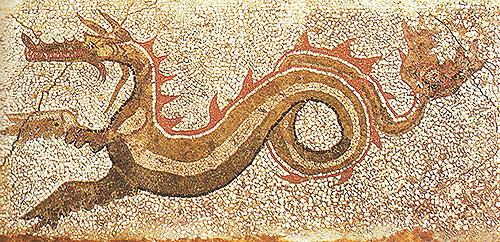
Dragon with frilled or firey tail in a 3rd century BCE mosaic from Kaulon (Magna Graecia, s. Italy ) courtesy of Wikipedia. Below are Roman mosaics with dolphins or porpoises.
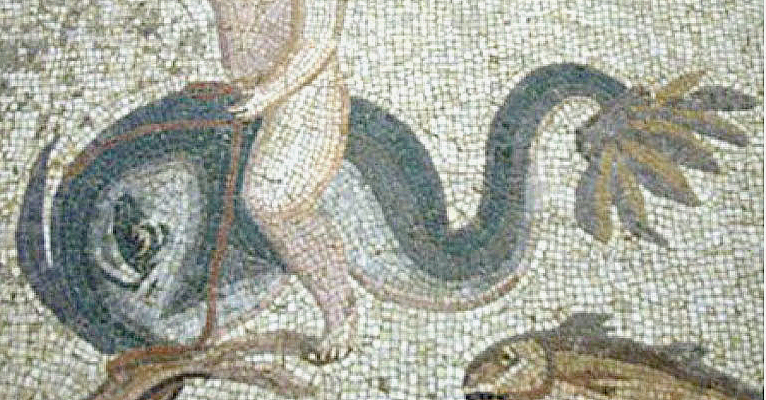
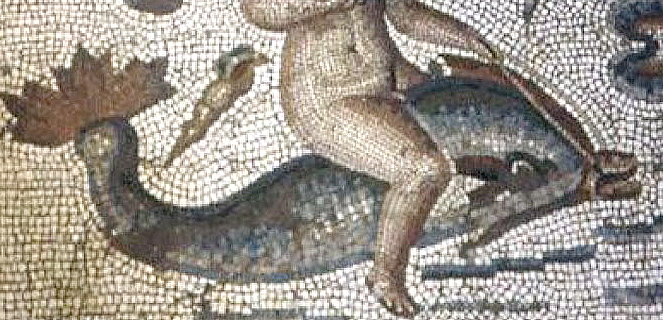

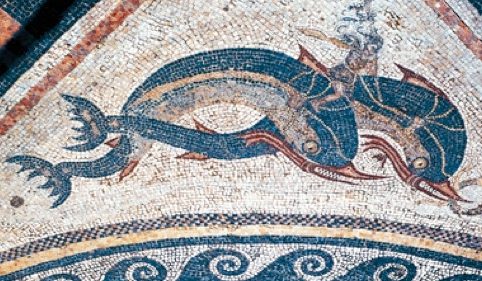 Dolphins or porpoises were a common theme in Roman art, but sea-goats and gods were also drawn with embellished tails.
Dolphins or porpoises were a common theme in Roman art, but sea-goats and gods were also drawn with embellished tails.
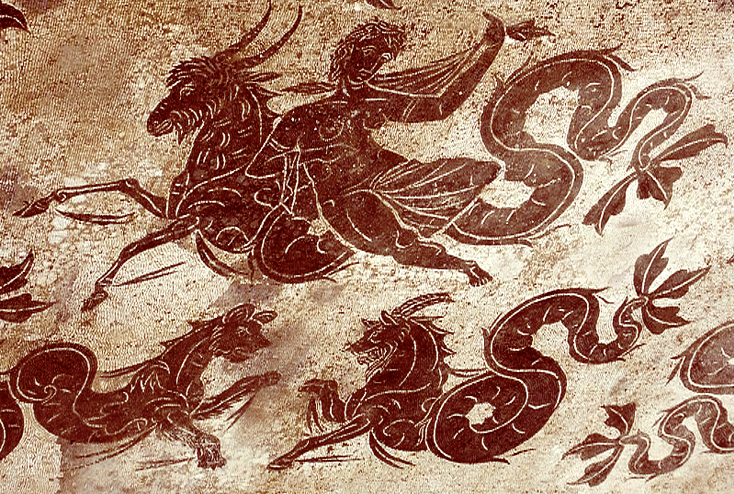
Sea-goat tails were frequently embellished, as in this Roman floor mosaic from Housestead, England, but lions and horses were sometimes drawn with flowery tails, as well (Housestead mosaic photos courtesy of Mary Ann Sullivan).
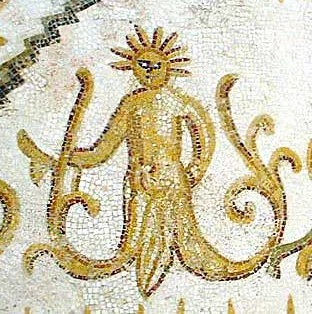 The natural question to ask is whether Roman imagery (or its later copyists) could have influenced the VMS illustrator and, if so, where was this tradition prevalent? The answer isn’t helpful—the fancy tails are everywhere. Roman flower-tails have been found in every corner of the realm from Rome to Turkey and Tunis to England.
The natural question to ask is whether Roman imagery (or its later copyists) could have influenced the VMS illustrator and, if so, where was this tradition prevalent? The answer isn’t helpful—the fancy tails are everywhere. Roman flower-tails have been found in every corner of the realm from Rome to Turkey and Tunis to England.
The tradition appears to have inspired manuscript artists in later years, as parchment became more widely available. Embellished tails can be found in marginalia in many manuscripts and not just on sea-critters, the idea expanded to include many forms of mythical beasts, gods, and hybrids. These are just two examples from Ms Trinity B-11-22:
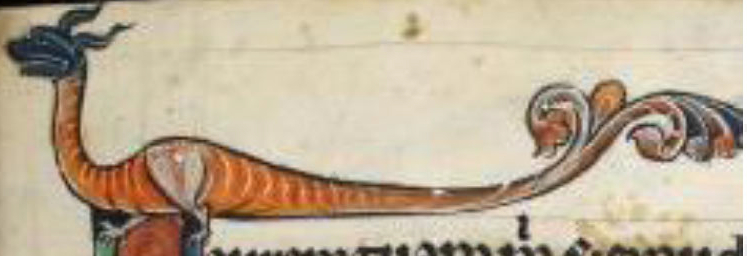
Flowery tails adorn marginalia dragons in many of the English manuscripts, perhaps inspired by the Roman mosaics at Housestead and Bath (Ms. Add. 62925 c. 1290).
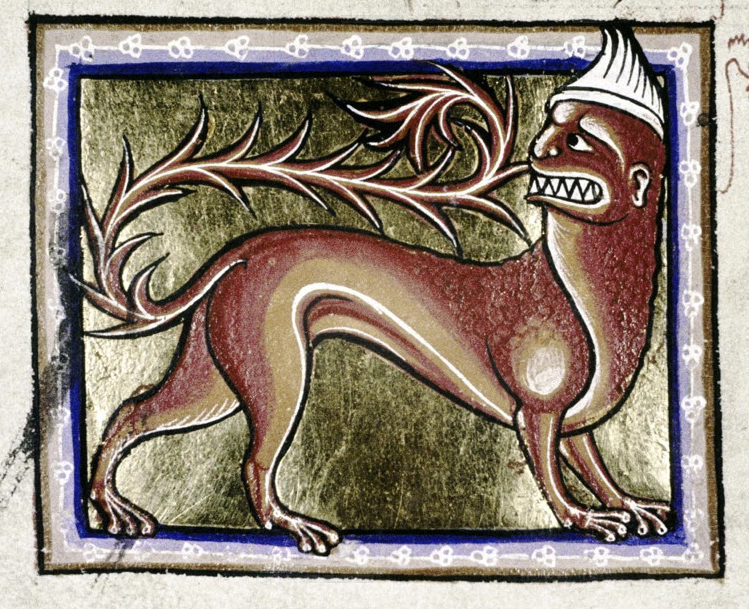
A manticore was a creature with a lion’s body, a man’s face, and the tale of a scorpion. As can be seen from this example in Ashmole 1511 from early 13th century England, the interpretation could be quite imaginative and unlike a scorpion’s tail.
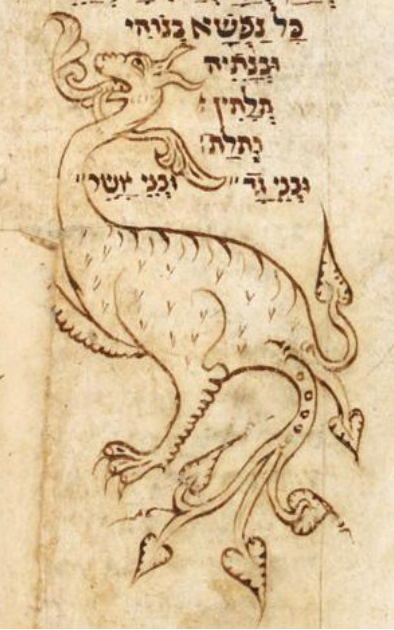
This lavishly embellished tail is in a late 14th c Hebrew manuscript in the British Library (Add Ms 26878).
Are There More Telling Tails?
Given the popularity of fancy tails in medieval manuscripts, it’s possible those strange painted-over tails in the VMS were intended as traditional embellishments that didn’t quite work and were covered up by the original illustrator, or maybe they were painted over by someone else. It’s hard to tell, but at least it appears they may not be as unusual as I originally thought.
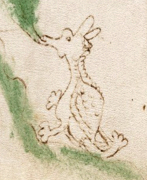 The flower-tail critters may also give us additional insight into the strange animal nibbling on a leaf in folio 25v, the one that several have claimed is a mandrake plant with a dog pulling on it.
The flower-tail critters may also give us additional insight into the strange animal nibbling on a leaf in folio 25v, the one that several have claimed is a mandrake plant with a dog pulling on it.
If the critter by the plant is a dragon, rather than a sheep or a dog (note that the ears are similar to the upper-right pond critter), maybe that curious appendage on its butt isn’t a badly drawn foot—maybe it’s a mini flower tail.
J.K. Petersen
© Copyright 2016 J.K. Petersen, All Rights Reserved
Addendum 2 Nov. 2019: I found something that might be directly relevant to this series of blogs about the pond critters and the strange tail-like lines under the paint on the drawing that looks like a dead sheep or fleece.
At first I thought the root-like appendage that has been painted over was a badly drawn flower-tail, but now I am not so sure. Recently I found a tail that was much more root-like—it didn’t have hair tufts or flowery vines as is common. But how can you tell from one example? It might be another badly drawn flower tail…
And then I found this…
This emblem is drawn by a fairly competent artist. The modeling of the body, the horns, and the head are good, so the way the tail is drawn is not from lack of skill. Thus, there might be another category of tail different from the usual tuft or vine styles, one that looks like a root or flames.
I can only post a thumbnail, it’s a rights-managed image, but if you click this link you can see it full sized. It has a date of 1451 across the top and is in the Church of St. Jacob in Nuremberg.


